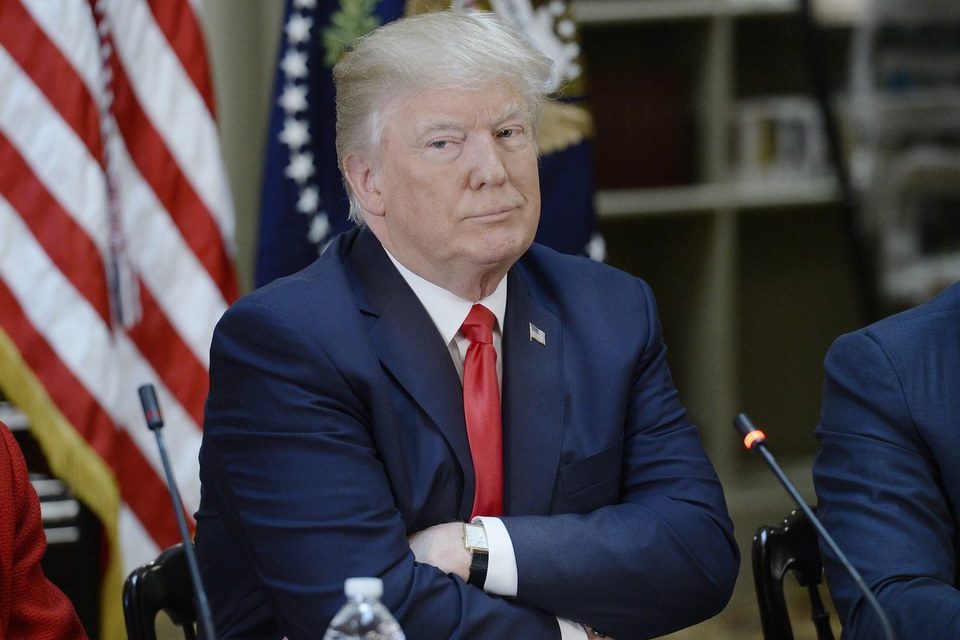As Donald Trump celebrates his Attorney General’s attempted burial of the Mueller Report on Trump-Russia links, he is facing questions over possible tax and insurance fraud.
Last month Trump’s long-time lawyer and fixer Michael Cohen pointed to the possible offenses by his boss. While limited in what he could say in open session of the House Oversight Committee, Cohen said Trump had inflated or deflated his supposed worth to curb tax payments and limit insurance premiums.
“Mr Trump is a cheat,” Cohen explained.
TrumpWatch, Day 769: How Much Trouble for Trump After Cohen Testimony?
Trump has also been accused of claiming insurance payments for damage that did not occur. In 2005, he collected about $18.3 milllion for his Mar-a-Lago resort after hurricanes in Florida. In fact, an investigation found “little evidence” of “large-scale damage”.
The Washington Post has now posted a further examination of Trump’s “Statements of Financial Condition” about his properties, debts, and supposed multi-billion dollar worth.
David Fahrenthold and Jonathan O’Connell summarize, “The documents were deeply flawed. Some simply omitted properties that carried big debts. Some assets were overvalued. And some key numbers were wrong.”
A statement in 2011 said Trump had 55 home lots, estimated at $3 million each, to sell at his golf course in southern California. In fact, he had only 31 zoned and ready to sell, according to city records.
Trump said his Virginia vineyard has 2000 acres, when it only covers 1200.
He even made the false statement that the 58-story Trump Tower in New York has 68 floors.
Following up Cohen’s public and private testimony, the House Oversight Committee has requested 10 years of statements from Trump’s accounting firm Mazars USA. The New York State Department of Financial Services subpoenaed records from Trump’s longtime insurer Aon, which made the $18.3 million Mar-a-Lago payment. And the New York State Attorney General’s office has subpoenaed Deutsche Bank and another Trump lender.
TrumpWatch, Day 320: Report — Mueller Subpoenas Trump’s Deutsche Bank Records
Mazars USA issued a brief statement that it “believes strongly in the ethical and professional rules and regulations that govern our industry, our work and our client interactions”. It did not comment about Trump.
The Washington Post reviewed copies of Trump’s documents for 2002, 2004, 2011, 2012 and 2013, obtaining them from court files, from people who received them from Trump’s company, and from Cohen.
In the Statements of Financial Condition, the accountants cover themselves by noting that Trump is the source of many valuations of buildings and that, contrary to normal accounting rules, he inflated estimates by counting unguaranteed future income.
The accountants noted that Trump told them to simply omit two of his major hotels, in Chicago and Las Vegas, which were carrying mortgages. The effect was to hide some of Trump’s debt load was hidden from anyone reading the statement.
The statements said that Trump’s Seven Springs estate in Westchester County, New York, was “zoned for nine luxurious homes”. So Trump valued the property at $261 million, rather than $20 million assigned by local assessors.
None of the homes was built.
“Users of this financial statement should recognise that they might reach different conclusions about the financial condition of Donald J. Trump” if they had more information, the statements concluded.
The 2013 statement is only two pages long as a “Summary of Net Worth”. It claims that Trump’s “brand value” is $4 billion, inflating his supposed worth from $4.6 billion to $8.6 billion.

